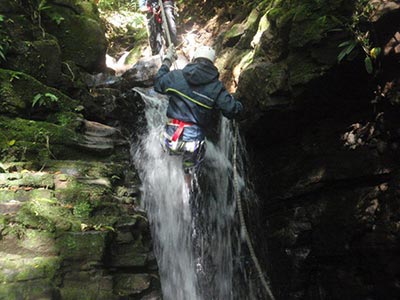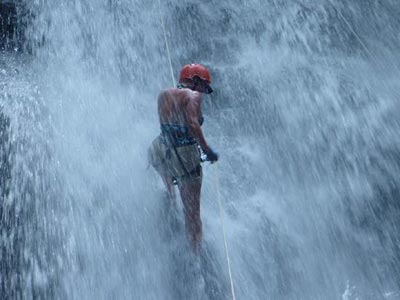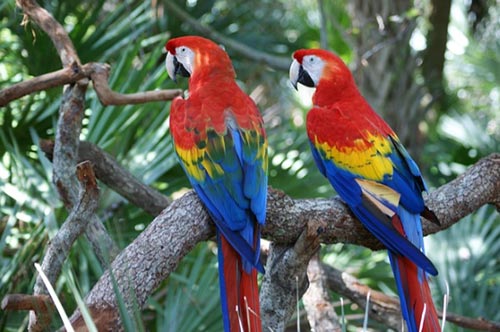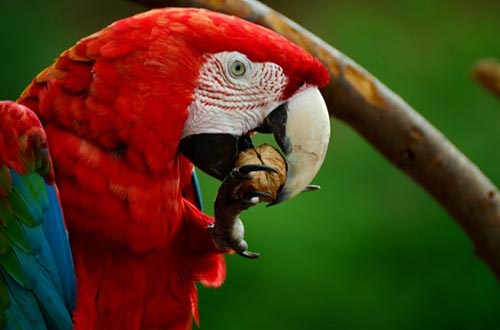You hear them before you see them.
The “rraak-aaarr” screech of a scarlet macaw in flight can be heard miles away and is intended to locate the rest of the flock. Costa Rica is one of the few places where people can still see these magnificent endangered wild birds, which measure almost a yard from beak to tail. The largest populations of scarlet macaws in Coast Rica are usually sighted in one of three national parks: Carara, Corcovado or Palo Verde. But they can also show up in places not normally listed in the guide books.
Jaco’s Scenic Overlook
One of those places is the scenic overlook just south of Costa Rica/Jaco off Highway 34. This is an unmarked dirt lot where motorists pull off the highway to rest and take photos of the Pacific Ocean and Jaco’s shoreline below. Last thing most people expect is to hear the screech of macaws.
The birds can be seen soaring on the ocean breezes and darting back and forth along the sheer cliffs on the other side of the highway where they likely have nests. Sometimes macaws can also be seen feeding in the almond trees that grow in the overlook. No one really knows how this flock of macaws ended up here. One story has it that many years ago there was a car accident nearby and two mated pairs of macaws escaped cages and ultimately became the progenitors of the current local population. Best time to macaw watch here is mid-morning and late afternoon.
The Parks
Corcovado National Park, which is located in the Osa Peninsula, is believed to have the largest concentration of macaws in Central America. For its size, the park is also known for having the largest diversity of plants and animals on the planet. You can find tours here specifically for spotting scarlet macaws.
Palo Verde National Park, located in the Gulf of Nicoya, is considered a birder’s mecca. Take a river tour and see not only macaws but also 280 other species of birds including toucans and herons. Carara National Park spreads out north of Jaco to Tarcoles and the Tarcoles River. The famous “Crocodile Bridge” on Highway 34 is not only a great place to find fat crocodiles basking in the mud below, visitors also regularly see the 200 or so scarlet macaws that nest and feed throughout the reserve. Around dusk you can see the macaws flying above the crocks going west along the Tarcoles River to the coastal mangroves where they roost for the night.
Macaw Facts
Macaws are the largest parrots in the Americas. The scarlet macaw is distinct in both color and shape. Tail feathers are long and pointed; wings short for its size; bright red feathers cover the head, back and lower tail feathers; facial skin is pinkish white. Noisy in flight, macaws feed silently. These birds mate for life. When one of the mated pair dies, the other often dies shortly later.






 +1 888-818-2097
+1 888-818-2097
 +506 8932-4731
+506 8932-4731